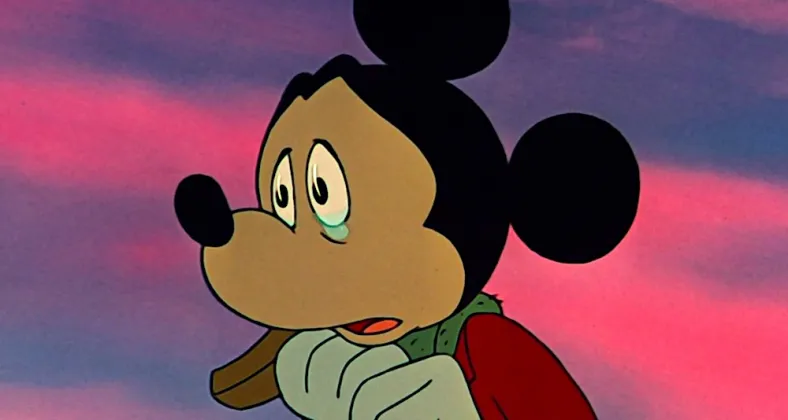
We have finally reached the end of the story. Disney Animation is indeed and truly dead. I don’t see how it can come back from the thing that killed it.
In the first three parts of this series, I took a look at Disney Animations’ beginnings, its rise to lead the world of animation in the fifties, and the fundamental compromises that computer animation inflicted on its artistic vision. Now it’s time to look at it’s final collapse.
Michael Eisner got a level of credit for accomplishments that he didn’t quite deserve. He did a lot for Disney, and honestly, even the bad stuff was way better than the horrifying things Iger would do to the company. However, it was a team effort. It was a combination of Michael Eisner, Jeffery Katzenberg, and Frank Wells running interference between the two and reigning in Eisner’s worst impulses that made the Eisner magic happen.

It was the three of them that turned Disney around and then turned it into a monster success. Largely they succeeded by riding roughshod over Disney’s corporate culture while pretending they were playing by its rules. Michael Eisner was famously never seen without a Mickey Mouse tie from the day he walked into the Burbank headquarters to the day he walked out for good twenty years later.
RELATED: Marvel Studios Echo Bombs On Disney+ With Ratings Worse Than Ms. Marvel
They created the Strategic Planning Committee or Strat Plan as it was called in its life. It appealed to Disney’s corporate culture of passive-aggressive collective decision-making that had settled into place during the “Is that what Walt would do?” period.
Realistically, it was rubber-stamping the decisions that the Triumvirate made.

Then tragedy struck. Frank Wells was killed in a helicopter accident in 1994. His official title had been President of the Walt Disney Company. And without him running interference between Eisner and Katzenberg, they started butting heads almost immediately. Katzenberg wanted Well’s job as President of the company, and Eisner, being Eisner, immediately started waffling and telling everyone else that he either would promote Katzenberg or not, depending on who he was talking to at any given moment. Bob Iger would go through the same nerve-racking ordeal a few years later.
Katzenberg finally accepted it was never going to happen and stomped off in 1994.
The last three projects that Katzenberg had had in the pipe at animation were all big winners at the box office, but then things changed.
The first disaster was Treasure Planet. While it was a daring bridge between gorgeous hand-drawn and computer animation, the story had this air of “Hello fellow kids!” around it. It was really more of a Generation X story, and none of us were kids anymore.
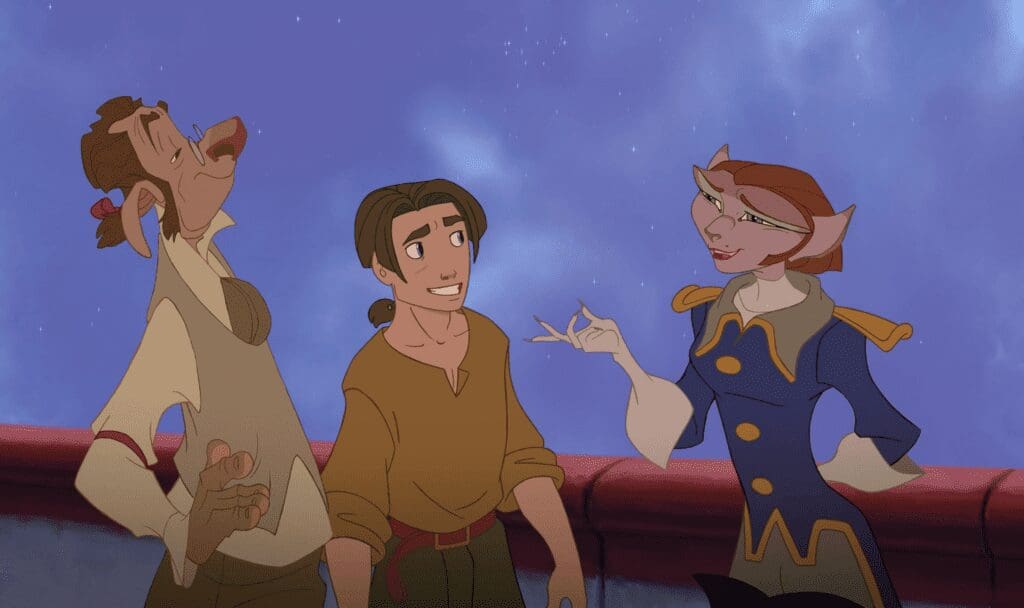
Emperor’s New Groove hadn’t done the kind of business Disney had gotten used to either but it wasn’t a disaster, it just felt like a straight-to-DVD movie that got a theatrical release. Lilo and Stitch did okay, but it was obviously no Lion King or even Aladdin. With Brother Bear, it was obvious that something vanished when Katzenberg left, and the animation department had lost its mojo. Even the animated movies that were making money weren’t generating the kind of excitement that had defined the Disney Renaissance only a few years before.
Whereas Pixar was blowing the doors off every time they had a release. Everything John Lassetter did was both a major hit and a pop culture earthquake.
It was clear that Disney had given up on hand-drawn animation when the execrable Home on the Range was released. By every standard available, it was Disney’s worst animated film (at least at the time).

To make matters worse Eisner had poisoned the relationship with Pixar. When that relationship had started, Jobs’s only job was being the head of Pixar, a small but successful studio and software company. He was decidedly the junior partner.
RELATED: Is Disney Abandoning California?
However, by the time of the breakup, Steve Jobs’s exile from Apple was over, and the ‘Interim’ part of his title of ‘Interim CEO’ had quietly vanished. He was now the permanent boss of Apple Computers. Jobs had become very much the bigger of the two men in that relationship, and Eisner was still treating him like the head of a minor studio that had to jump when Disney said, “Frog!”
When the relationship with Pixar collapsed, Roy Disney had finally had enough, quit the BOD, and raised his war banner. By every possible measure, Disney was underperforming, and there was just a general feeling of ‘Michael’s done great things for Disney, but he’s just been here too long.’
The President of the Walt Disney Company was promoted, and Bob Iger became the fifth CEO in the history of the company. His first action was the acquisition of Pixar. In his biography, Iger acts like he was pushing the Rock of Sysphus uphill all the way to make that deal happen, but the truth (that he deftly avoided in his book) was that Steve Jobs had to sell, and it was best for him if he sold Pixar to Disney.

Pixar only produced one film every three years back then, and given the budget, each and every one had to be a major hit. A couple of underperformances or, god help them all, an outright bomb and he would have to close the studio and just sell Renderman packages.
RELATED: Ewan McGregor Begs Megacon Crowd To Write Disney And Ask For Second Season Of Obi-Wan Kenobi
The easiest solution for Jobs would have been to sell Pixar to Apple, but the Apple BOD would never approve it. There were a ton of reasons, but one of the biggest was that it would put seven billion dollars worth of Apple stock into Jobs’s pocket and, thus, give him direct control of more board seats than the institutional investors were remotely comfortable with. An Apple deal was not going to happen.
That meant selling it to someone in Hollywood. Time Warner was doing pretty well back then, and they had the capital to do it. However, the rights to all of his previous movies were hopelessly tied to Disney. More importantly, Disney needed him more than he needed them, which would give him a real edge in the negotiations. Disney’s animation department had collapsed, and everyone knew it, and boy, howdy was Jobs ever in the driver’s seat on that deal. In The Ride of a Lifetime, Iger acted like Jobs was an impossible sell that somehow barely managed to close on.
But the truth is Steve Jobs took Disney to the cleaners.
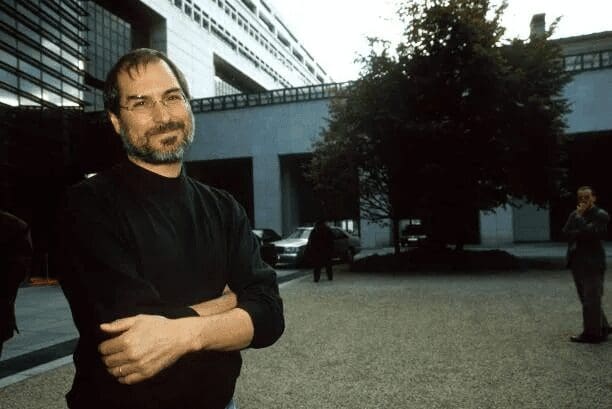
RELATED: The Death of Disney Animation Part III
Iger had a hell of a time selling the merger to the Disney BOD because back then, they actually did their job instead of saying, “I don’t know, Bob, what do you think?” all the time.
Robert “My Middle Name is Irony” Iger summed up his pitch meeting for the merger with the phrase, “As Disney Animation goes, so goes the company.”
I will, quite grudgingly, give Iger credit where it’s due. He was absolutely right on that one. Animation has always driven the company’s success. When it fails, it takes the entire company down with it, just like it’s doing now.
In The Ride of a Lifetime, Iger makes it clear that after the deal went through, he had been very much in favor of the idea of selling Disney to Apple. He seems to believe that Steve Jobs would have gone for it if he had lived. I pondered on why that was important to him, and I think I know.
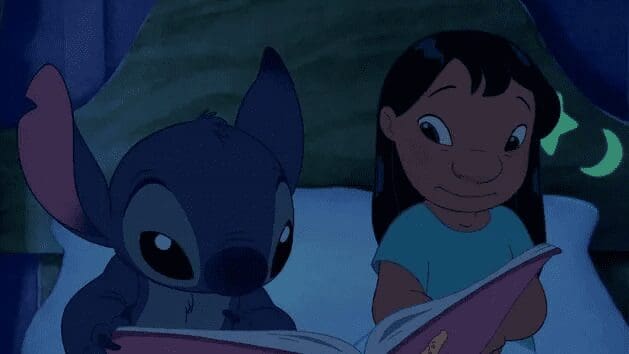
Something that became clear to me when reading his biography. Every major career boost he had was the result of a merger. He had an “okay, I guess” career path as an executive at ABC, but it seemed unlikely he’d get to the top of that greasy pole from the sports division. However, when ABC got bought out by Captial Cities, the new owners took a serious interest in the personable young exec, and in not too short of a time, he found himself as President of ABC.
When Disney bought up ABC, he found himself on a senior executive career path upward in a much more gigantic company. When the horrible choice of Mike Ovitiz as a Disney President became all too obvious. He got bumped up, which put him in spitting distance of Michael Eisner’s job.
But where could he go from being CEO of Disney? Well, Steve had already put Bob on the Apple BOD as part of the Pixar deal, and if Apple did buy up Disney, he would be one of the very few people directly beneath Steve Jobs, who had a history of pancreatic cancer. It’s just a guess on my part, but becoming CEO of Apple would be one hell of a lot more prestigious than being the CEO of an entertainment company.
However, by 2015, Steve Jobs was in the ground and Tim Cook wasn’t remotely interested in entertainment other than a hobby business like Apple TV+.
By 2015 the Disney BOD was making serious noises about Iger having a succession plan. Which, at the time, he seemed willing to do. But then, in 2016, a new dream took hold in Bob Iger.
Donald Trump became the Republican president of the United States and did so primarily on his skills of branding and deal-making. And Bob Iger knew he was better at both those things than Donald Trump. He was going to have to stay at Disney a while longer because he had a bunch of new deals to make, this time with the Democratic party. He would need the Walt Disney Company to make that happen.
Back to animation.

I will also give Iger credit for giving the art of hand-drawn animation one final chance with The Princess and the Frog. However, ten years of cheap straight-to-DVD animated junk had degraded and diluted the Disney brand. The movie was okay, but this film wasn’t as good as the ones from the Renaissance, and everyone could tell just by looking at it. The attitude of audience members was, meh, I can wait a few months until it’s out on DVD. I’ll buy it then. An attitude that has returned to haunt Disney tenfold with the creation of Disney +.
Thus Disney Studios turned into Pixaren’t. The company began producing computer-animated films that were fundamentally indistinguishable from Pixar’s. There are no real differences between Tangled and Brave or Monster U and Wreck-It Ralph. The movies from Disney Animation proper still had songs in them, sometimes, but that was pretty much it.
It was about this time that Bob Iger’s frantic hiring and promoting people with strong ties to the Democrats led him to promote an ideologically minded young writer with a very good track record for hits named Jennifer Lee. She had been a major voice in Zootopia, Wreck-It-Ralph, and, most importantly, Frozen. She was exactly the kind of person that Bob Iger wanted to get ahead at Disney. A woman who had the kind of political views that were very much in synch with Bob’s own.
RELATED: Disney CEO Bob Iger Announces Slowdown In Marvel Content, But Wokeness Will Stay
After #METOO pushed John Lasseter out of the company (and I would really love to know if Jennifer Lee had anything to do with that), she began a campaign to have women gain equal representation in the writers’ room. A policy that Disney was only too happy to implement by 2019. As for their qualifications? Successfully being born with a vagina seemed to be about it. Allegedly, no track record as a creative was needed at all, but ideological purity was. This was the start of the period where the goal of Equity hiring shoved merit and qualifications completely off the roof at Disney.
2019 was the year that Strange World and Wish began planning. According to WDWPro, whose word I am willing to accept as the gold standard on this, before every meeting of the writer’s room, she would have a women’s only pre-meeting where the ideas for the movie would actually be decided. When it was time for the all-hands pitch meeting, any MAN who didn’t go along with their ideas would find themselves on the receiving end of a struggle session, along with uncomfortable conversions with the diversity officers and then Human Resources.
Only the most hardcore of ideological ideas were being aired. The company had been completely captured by political activists. The hiring quotas from Latonda Newton’s office stressed checkboxes well above any kind of actual qualification or proven competence. The diversity diaries started being required, and mandatory struggle session meetings turned Disney into the worst company to work for in Hollywood if you were a white male whose name wasn’t Iger or Chapek. And yes, the very worst of this stuff happened during Bob Chapek’s tenure.
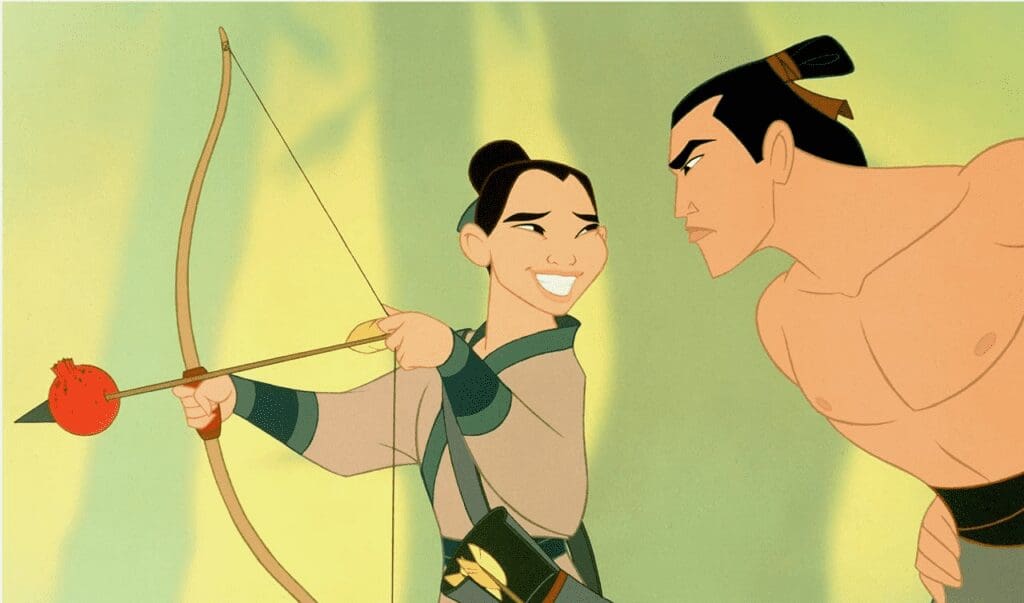
Anybody at Disney or Pixar with any kind of real talent was calling up John Lassetter to see how things were going at Skydance and could he perhaps use their services? If not him, then other studios, and if not those, then who the hell cares so long as I’m not working for Cancer Rat?
RELATED: Gina Carano Reveals To Glenn Beck How Disney Put Her Life In Danger In New Interview
Disney Animation, before the Renaissance, still had all the elements needed to make it great again. It just needed direction and leadership.
That is not the case today.
Disney has been absolutely gutted by this most critically important human capital, the artists at Disney Animation. A resource that was carefully planted at CalArts more than fifty years ago, grown and nurtured lovingly as something known to be completely irreplaceable. A generations-long source of mentorship in an art form that built the Disney Company up from a dream by two brothers named Walt and Roy has been clear cut to the stumps, and the stumps ground away, all in the name of Diversity, Equity, and Inclusivity.
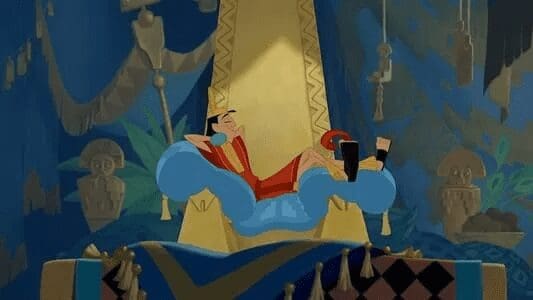
As for anybody new to the business? The attitude among talented up-and-comers has clearly become, why would I want to work for Disney?
The summer of 2023 was the end. Strange World had been no aberration. Wish proved it. Disney animation is dead. And as Bob Iger said himself…
As Disney animation goes, so goes the company.
What do you think about Disney’s long history of Animation? What’s your favorite animated Disney movie? Let us know in the comments!

Leave a Reply